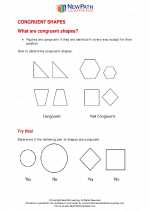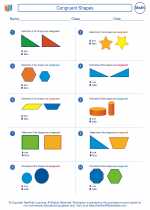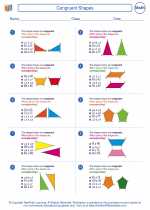Polygon
A polygon is a closed figure formed by joining line segments, where each line segment intersects exactly two other line segments, with no intersecting or overlapping segments. Polygons are named according to the number of sides they have. Here are some common polygons:
- Triangle: A polygon with three sides.
- Quadrilateral: A polygon with four sides.
- Pentagon: A polygon with five sides.
- Hexagon: A polygon with six sides.
- Heptagon (or Septagon): A polygon with seven sides.
- Octagon: A polygon with eight sides.
- Nonagon: A polygon with nine sides.
- Decagon: A polygon with ten sides.
Properties of Polygons
There are some important properties of polygons that you should be familiar with:
- Number of Sides: The number of sides in a polygon is equal to the number of vertices (corners).
- Interior Angles: The sum of the interior angles of a polygon with n sides can be calculated using the formula: (n-2) * 180 degrees.
- Exterior Angles: The exterior angle of a polygon is the angle formed between one side of the polygon and the extension of an adjacent side. The sum of the exterior angles of any polygon is always 360 degrees.
Types of Polygons
Polygons can also be classified based on their characteristics:
- A regular polygon is a polygon with all sides and angles equal.
- An irregular polygon is a polygon with sides and/or angles that are not equal.
- A convex polygon is a polygon in which all line segments joining any two points within the polygon are contained within the polygon.
- A concave polygon is a polygon in which at least one line segment joining any two points within the polygon is not contained within the polygon.
Study Guide
When studying polygons, it's important to understand the following key concepts:
- Identifying and naming polygons based on the number of sides.
- Calculating the interior and exterior angles of a polygon using the relevant formulas.
- Distinguishing between regular, irregular, convex, and concave polygons.
Practice drawing different types of polygons and calculating their angles to reinforce your understanding of the topic.
Remember that polygons are an important part of geometry and have many applications in real-world problems, such as in architecture, design, and engineering.
[Polygon] Related Worksheets and Study Guides:
.◂Math Worksheets and Study Guides Fifth Grade. Congruent Shapes

 Worksheet/Answer key
Worksheet/Answer key
 Worksheet/Answer key
Worksheet/Answer key
 Worksheet/Answer key
Worksheet/Answer key
